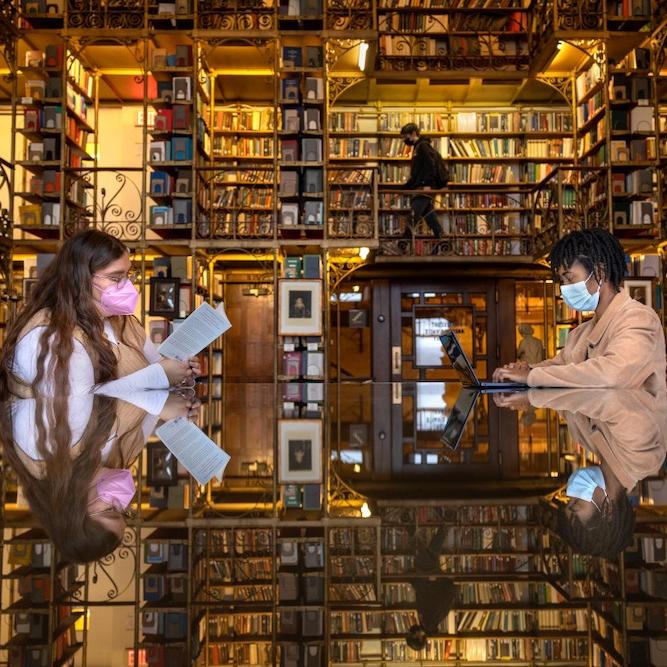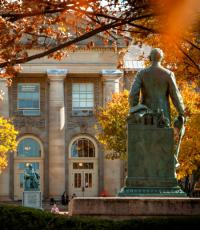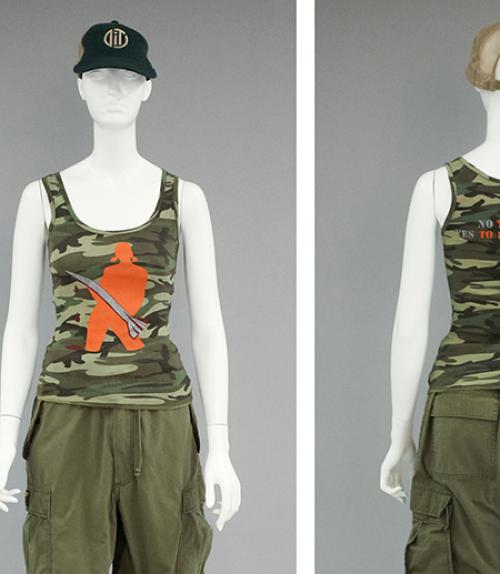“Media Objects,” a media studies conference originally scheduled for March 2020 at the Herbert F. Johnson Museum of Art, has been reconfigured into a virtual event, with the first panel scheduled for Oct. 23.
Subsequent panels are planned for Nov. 13, Dec. 4 and in February and March of 2021.
During each virtual panel, scholars from disciplines ranging from Asian studies to architecture to fiber science and apparel design will present various objects – some physical, some digital; some small as a gem, others as large as an urban landscape – and discuss their connections to media, according to Jeremy Braddock, associate professor of English.
“In one way, the idea of the ‘media object’ was meant to emphasize what we felt was a shared interest in materiality across the various disciplines that engage the study of media,” said Braddock, chair of Cornell’s Media Studies Working Group. “But ‘media objects’ was also meant as a kind of heuristic that could focus the short presentations, put them in conversation with each other, and bring forward for scrutiny the common beliefs that structure the wide range of disciplines brought together by the conference.”
Together with the fall 2019 conference “Siren Echoes” – which focused on ancient media – “Media Objects” showcases Cornell’s historically broad approach to media, as well as its very wide interdisciplinarity.
The conference is organized by professors involved in the Media Studies initiative, and is sponsored in part by CIVIC (Critical Inquiry into Values, Imagination and Culture), the provost’s Radical Collaboration initiative focused on the humanities and the arts.
The Media Studies Working Group includes faculty from three colleges: Arts and Sciences; Architecture, Art and Planning; and Agriculture and Life Sciences. Other members of the group are from the faculty of Computing and Information Science, and Cornell University Library.
“Media Objects” will have a similar multidisciplinary flavor. On Oct. 23, Steven J. Jackson, associate professor of information science and science and technology studies will lead a panel on “Materiality/Immateriality.” Contributions to this panel include examination of the ancient Greek lyre; a photograph of a page from a J.R.R. Tolkien paperback on Tumblr; and an “electrical penetration graph” – a gold wire used to study how insects feed on plants.
“Each panelist will give a 10-minute description of their media object,” Braddock said, “followed by a brief discussion in which the presenter might consider ways their chosen object confirms or challenges assumptions within their home discipline.”
Braddock will facilitate the Nov. 13 panel on “Textuality,” incorporating media objects, including a book bound in tree bark; a page of disguised handwriting from 1778; and a photoliptophone, a 1937 device that would read a newspaper out loud.
The Dec. 4 panel, led by Katherine Sender, professor in the Department of Communication and the Feminist, Gender and Sexuality Studies Program, investigates the topic “Bodies/Intimacies” with considerations of objects including an “I Voted” sticker, magical gems from ancient Rome and a camouflage tank top from the now-defunct clothing line Dykes in the City.
Two media-related exhibits currently at Cornell University Library’s Division of Rare and Manuscript Collections add a dimension for conference participants: “Electrifying Music: The Life and Legacy of Robert Moog” and “More than Reported: Black Women in Media.”






